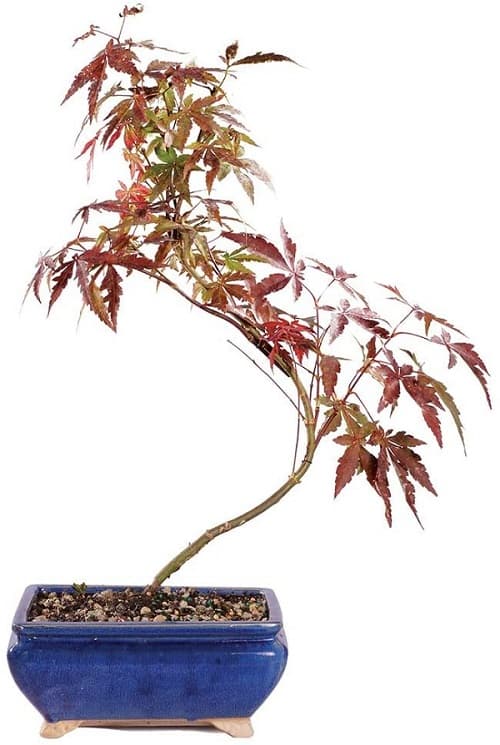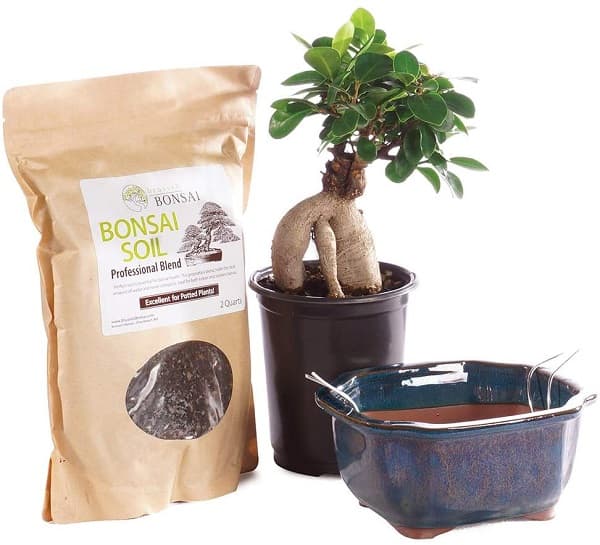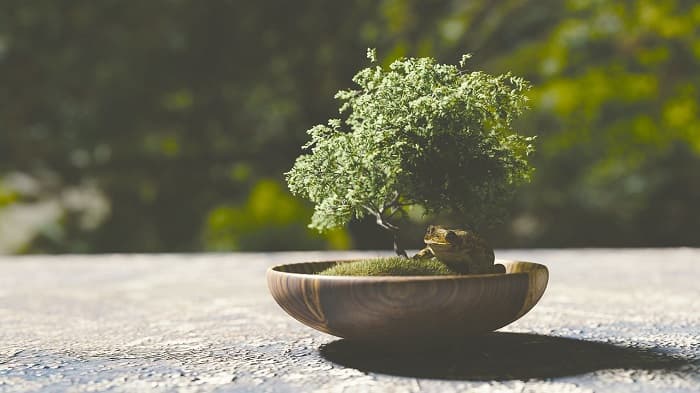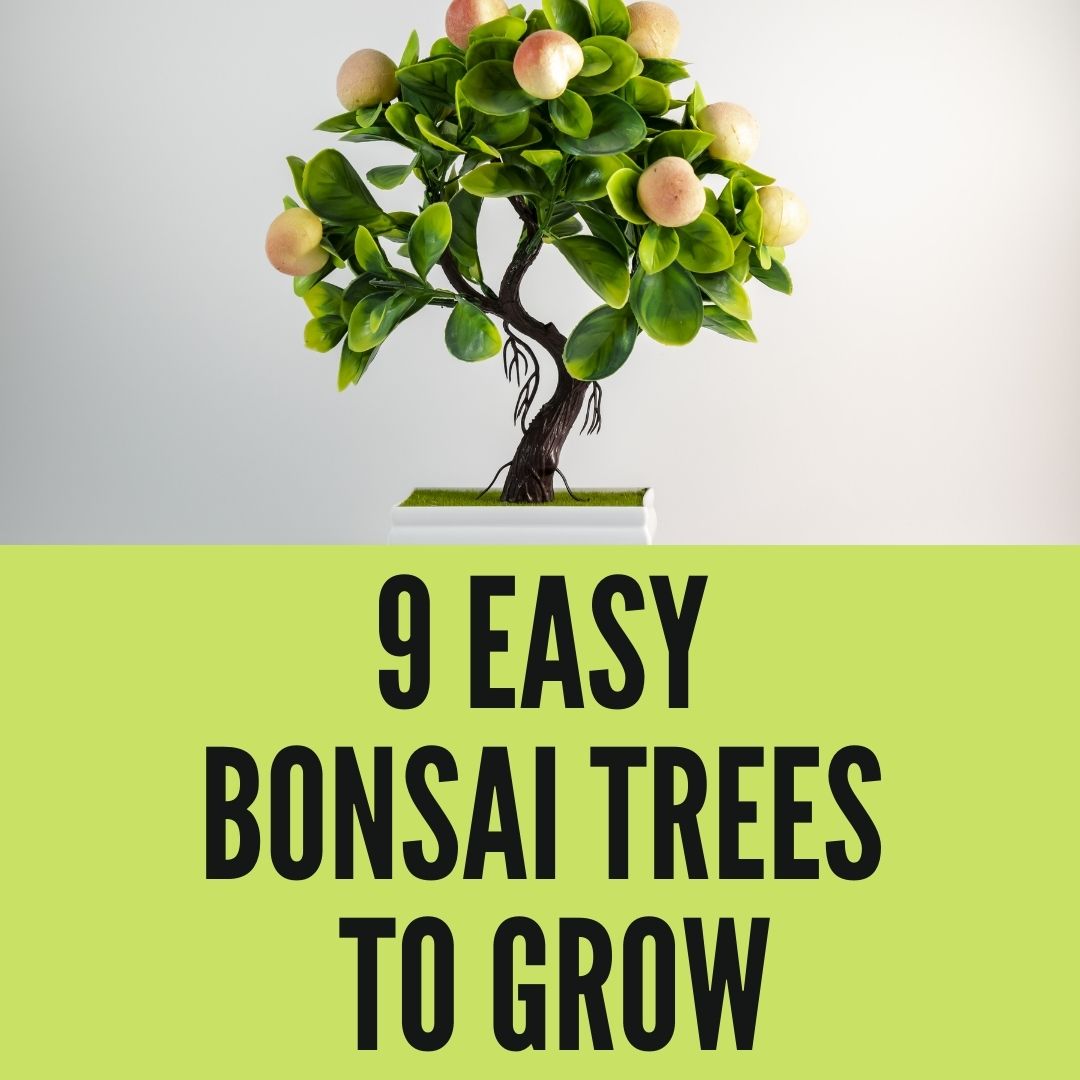Bonsai is a thousand-year-old practice that utilizes cultivation techniques to make a miniature full-sized tree. This Japanese art was originally originated from the Chinese practice of penjing (tray scenery). In the 6th century, Buddhist students brought many Chinese ideas and goods and the idea of bonsai was one of them.
In the 14th century, the term for small plants was Hachi no ki (a bowl’s tree). After 1860 bonsai was growing to reach the ordinary. After world war 2 bonsai gained popularity outside of Japan.
The word ‘bonsai’ translates to ‘a tree planted in a shallow container’. They are crafted by cutting and shaping a small tree to look like a big tree in a tray. They are not genetically dwarfed. It is cut and shaped to look short. It is a form of art where the artist expresses his/ her expression through good horticultural practice.
Today we will be looking through some easy growing bonsai species. Bonsai requires a great deal of work and patience and dedication. But some are relatively easy to water, fertilize, re-pot, prune, and wire. So here are some easy growing bonsai if you are new to bonsai.
Easy Growing Bonsai
1. Cork Bark Chinese Elm
Chinese Elms or Cork Bark Chinese Elms or Ulmus parvifolia are one of the most popular trees for bonsai. These are very easy to propagate from pruning, wiring to root or branch cutting and taking care. They are very forgiving. That is if you cut a wrong branch, it will easily grow a new one.
It can grow in a wide range of temperatures from 10°C to 30°C. So, it can be grown both indoors and outdoors. If indoors, it is better to keep it in a cool room with sunshine. They grow better in partial shade. Overall if you are new to the bonsai world, Chinese Elm is a good choice for practice. They grow very fast.
So you have to be carefully cut it constantly. But you can use this inconvenience to your advantage and cut it to shape and as you want. Pest control is also very easy. These plants are very common and sold in most bonsai nurseries.
2. Cotoneaster
Cotoneasters are a genus of small tree shrubs that are native to Europe, North-Africa, and Asia. They have dark green leaves, white flowers that turn to red fruits shaped like little apples. Aside from being very beautiful, these little plants are very tolerating. There are a variety of species under this genus.
They vary from cold-loving to sun-loving. But most of them love sun or partial sun. They are very low maintenance regarding watering, fertilizers, etc. They are not as fast as Chinese Elm, but they are quite fast. Across their variety of species, Cotoneaster microphyllus is commonly known as small-leaved cotoneaster.
3. Junipers
Juniper or Juniperus is also a genus. The species of plants under this genus have small foliage, which looks very beautiful along with the miniature aesthetics of bonsai. There are two types of junipers based on the shape of the leaves. One is needle-like, and the other is scale-like.

There are very easy to make into a bonsai. They are tough and sturdy which means these plants can withstand rough and aggressive pruning. Junipers can grow both inside and outside. It is common to leave them out so that they can grow into big trees themselves. But you have to take care of it a bit more than that if you want a bonsai.
If you are a beginner, this plant will give you an idea of how much patience you need for a delicate bonsai. But they are also very forgiving. Give it a good amount of sunlight, use regular fertilizers, water properly, prune and wire carefully, and you should have a beautiful Juniper bonsai.
Some recommendations for Junipers are Chinese Juniper and the Japanese Shimpaku (scale-like leaves) and The Japanese Needle Juniper (needle-like).
4. Ginseng Ficus
Ginseng ficus (Ficus retusa) is a great place to start if you are new to bonsai. It is a species of the Ficus genus that contains 800 to 200 species. While most of them are simple to bonsai, Ginseng ficus takes the crown. They are very tolerant. They can grow with a bit of neglect. But you still have to take care of it a bit.
Like it cannot grow in a frosty environment. So, keep your ginseng in a warm and place. Water the plants when the soil is dry. Prune and wire a bit hard since it is a tough plant. Now you have to shape them according to your aesthetics. Its aerial roots, oval-shaped trunk, and dark green leaves will look good as a bonsai.
5. Japanese Maple Trees

Japanese Maple or Acer palmatum had originated from East Asia. Besides being low-maintenance, these plants are very beautiful. They start with green leaves that turn orange and then red as they mature.
They can be grown both inside and outside, but anyone would prefer to keep these red plants inside.
They will increase the beauty of your office or living room. In that case, make sure it gets enough sunlight but not too much. These plants need to be watered regularly, especially on hot summer days.
Use organic fertilizers as they have proved to be well effective. And the leaves will turn red when it is mature and autumn time.
6. Dwarf Jades
Dwarf jades or Portulacaria afra are originally from dry regions of South Africa. During Autumn, this plant bears white flowers, but only if there have been droughts in the season.
The main advantage it serves to beginners is these can withstand droughts. It stores water in its trunk and leaves so it can survive without regular watering.

During winter, you can water plants as often as once in 3 weeks. You also don’t need to worry about fertilizers. Fertilize them with any common fertilizers as often as once a month, and it is good to go. It is also very tough against pests and diseases. So as a beginner, you don’t have to worry much about this plant that much.
7. Chinese banyan
Chinese Banyan or Ficus Microcarpa is also a species that belongs to the Ficus genus. It is also a much less complicated bonsai that you can grow indoors.
This evergreen needs sunlight to grow but should not be exposed to direct sunlight. This evergreen plant grows naturally in moist.
So keep the soil moist but not too wet. Ficus microcarpa can sprout new sprigs directly from the bark of the trunk. Because of this reason, you can’t make any mistakes when pruning!
8. Japanese Flowering Cherry
Japanese Flowering Cherry or Prunus serrulata and other cherry trees signify friendship, good luck, new beginnings, etc. They also make very beautiful bonsais that make your indoors charming. Japanese flowering cherry bears beautiful pinkish-red flowers that bloom in the springtime.
Not only do these beautiful flowers give a spring flavor to your indoors, but they are also easy to grow for yourself. These trees also love a sunny place. But these plants require plenty of water. Look out for the roots so that they don’t get dry. Use balanced fertilizers every week.
These trees are a bit of labor work to keep in shape. Let the new shoots grow freely for some time. Trimming too early may cause drying out. You have to be a bit careful about this plant. But in return, you will get a beautiful small cherry tree in your house.
9. Privet
Privet (Ligustrum) is another genus, but this genus is for the olive trees. This genus consists of more than 50 evergreen and deciduous subspecies and cultivars with various leaf colors and forms.
The privet is a sturdy plant, takes all bonsai styling techniques very well, grows in almost any soil, takes trimming very well, and is also a good choice for beginners.
They are thick trunked which is perfect for making a bonsai. Most of the species under this genus produce moderately poisonous fruit. They can grow in bright sunlight, even in direct sunlight.
They need a lot of water on hot days but less on winter days, which is just enough to prevent drying roots. Apply solid organic fertilizer every four weeks or use a liquid fertilizer every week during the growing season. Always apply the liquid fertilizer to moist soil.

Frequently Asked Questions
What is the fastest-growing Bonsai tree?
How long does it take for a bonsai tree to grow?
How do you speed up bonsai growth?
Why do bonsai trees grow so slow?
Can I Bonsai any tree?
Why is bonsai so expensive?
What is the most expensive bonsai tree ever sold?
How do I make my bonsai trunk thicker?
Why are bonsai in small pots?
Is moss bad for bonsai?
Conclusion
Bonsai is a thousand-year-old practice of art in nature and with nature. This art form may awake the hidden artist in you. We hope this article has given you the encouragement to start your own bonsai.
If you are a beginner you may buy an affordable bonsai plant from a local or online store. But creating an artform by yourself in nature gives the most joy to a person. So, don’t be afraid and go for it.
But be warned that the art of bonsai, like any other art form, requires a great deal of patience, care, and knowledge, even for the fast-growing ones.

